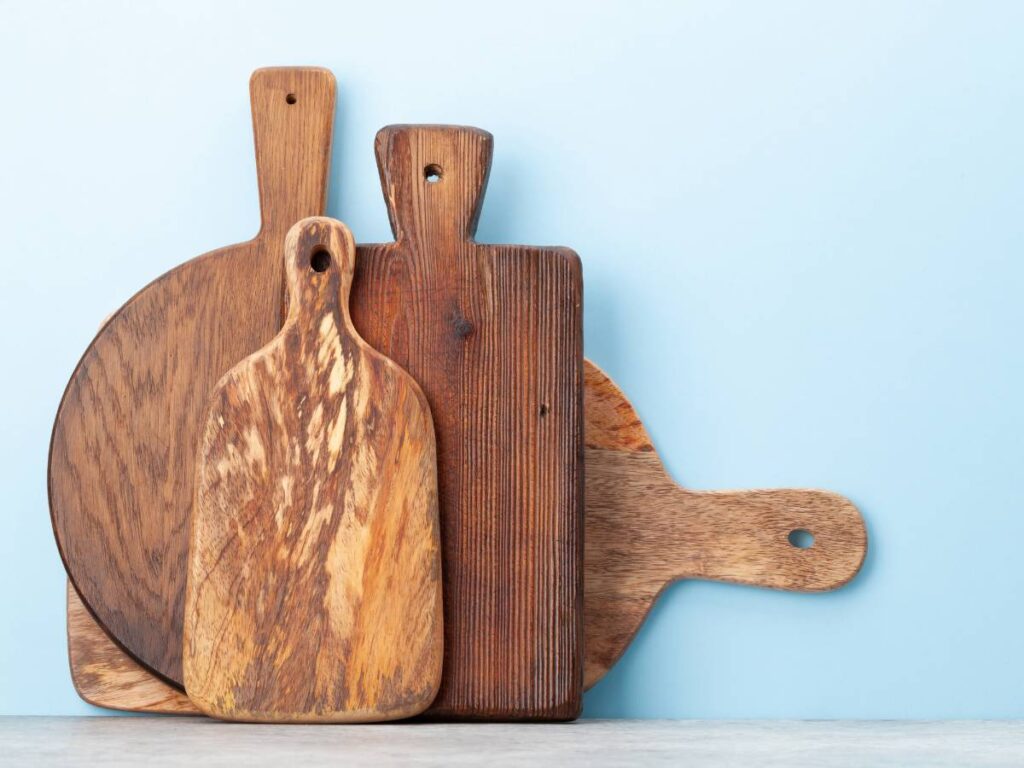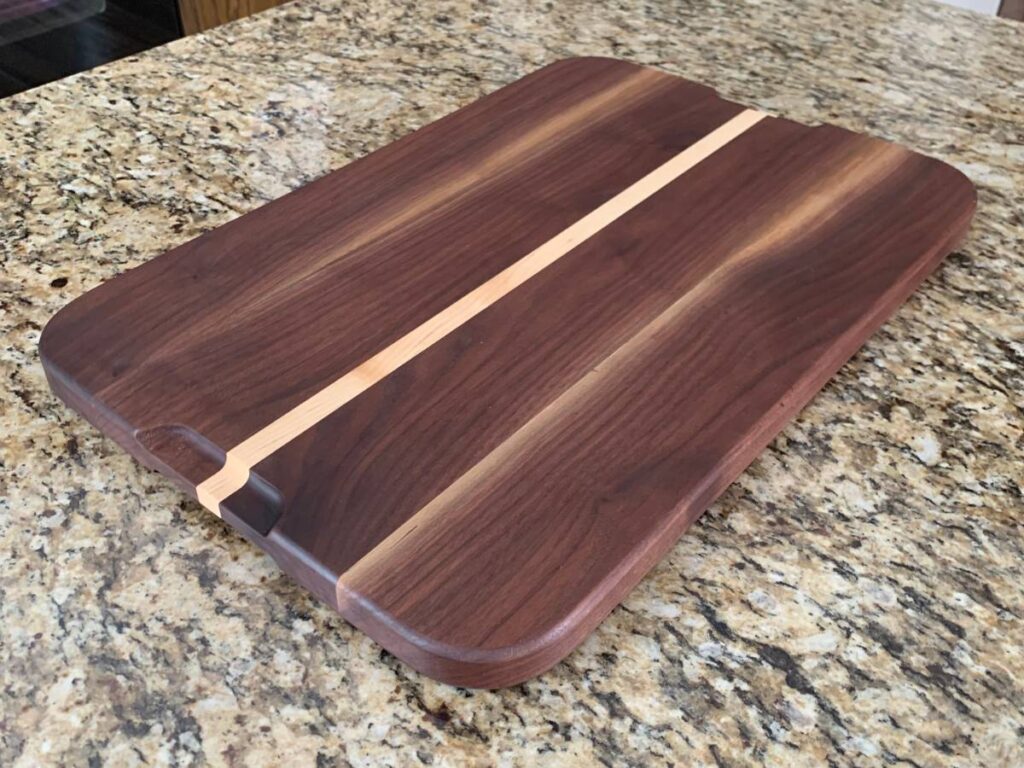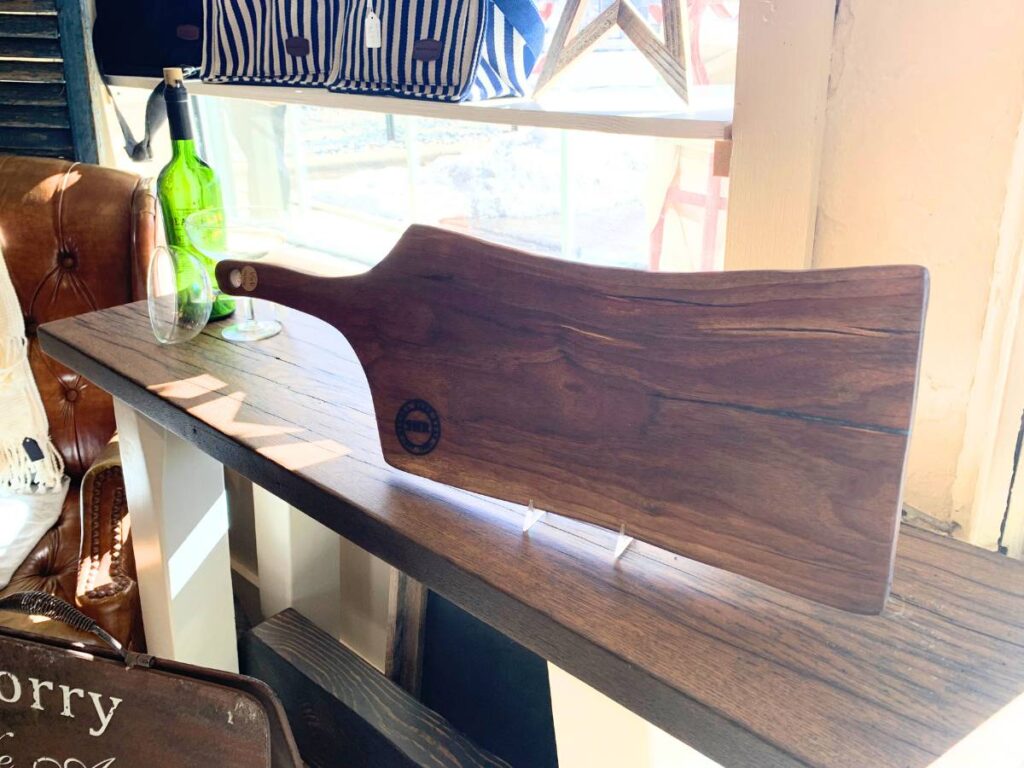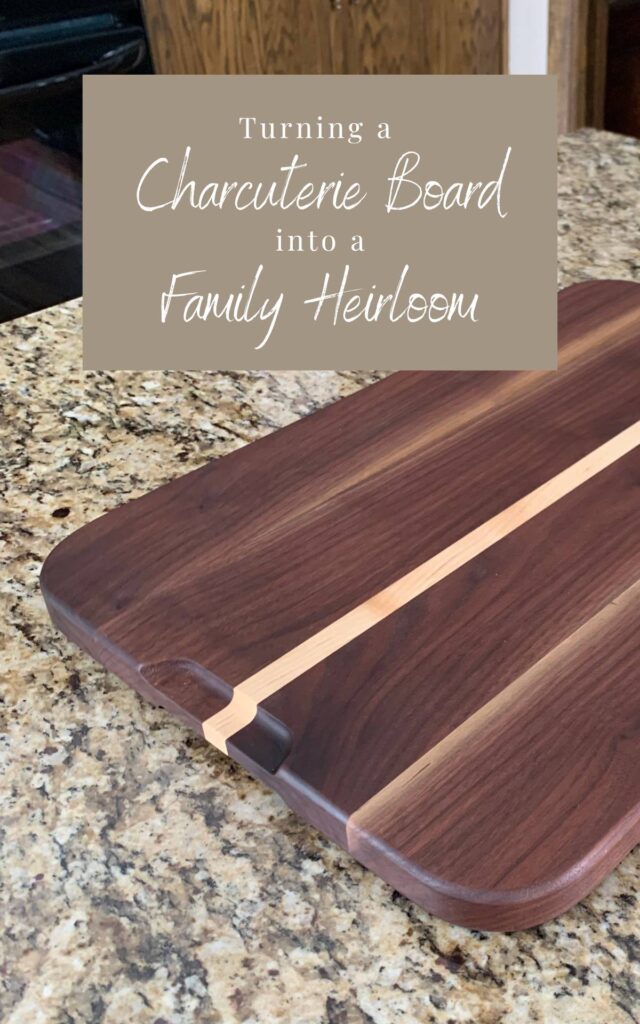This post may contain affiliate links, which means I may receive a commission from purchases made through links. Learn more on my Privacy Policy page.

Are you loving the charcuterie board trend? Have you ever thought about making a family heirloom out of one? Here are some tips for selecting and caring for an heirloom-quality cutting board.
My husband’s uncle (the family woodworker) recently sent me a beautiful custom-made solid walnut and maple board. I haven’t had a chance to use it yet (hence the boring, bare photo), but I’m excited to bust it out next time we have friends over!

What Makes a Charcuterie Board an Heirloom Piece?
That’s really up to you. The crappiest worn-out cutting board could be considered an heirloom if it has sentimental value to you. Maybe you remember a loved one making a special recipe with it, or it just brings back fond memories of that person. When my husband and I were first married, we rented his grandma’s house from her while she was in an assisted living facility. She said we could have anything we wanted from her kitchen, and 10 years later, I still use many of her things and think of her each time. My 90-year-old grandpa still has a cutting board that he made for his mother in his high school shop class. After many years of everyday use, she returned it to him before she died. That’s something I wouldn’t mind having one day!
Another idea that I had, is if you have an heirloom piece of furniture that is unwanted by your family members or isn’t worth restoring, you could cut it up and make a couple of charcuterie boards, as long as it’s made from a suitable wood (more on that later). Then you can more easily keep a piece of your family history!

Choosing a Charcuterie Board for a Future Heirloom
On the other hand, if you’re looking to purchase or make a heirloom quality board, there are a few things to consider. You’ll want to select a wood that is non-porous and has a beautiful wood grain, such as maple, cherry, walnut, beech, teak, acacia, or olive wood. You’ll want to steer away from woods with a strong odor, such as cedar, which could alter the flavor of food on the board. There’s a great article HERE to learn more about what woods are good and bad for charcuterie boards, as well as board care.
There’s a plethora of options such as specifically cheese boards, boards that show a “live edge” or end grain, and custom sizes. You can even coordinate them with unique table linens. Some are wood mixed with marble or resin to create beautiful designs. Some companies even offer to etch family recipes (in the original handwriting) onto one side of the board. The options are endless!

How to Maintain Your Heirloom Charcuterie Board
After each use of your charcuterie board, you’ll want to wipe off any food remnants, and then you can use warm, soapy water and a cloth or soft brush to gently scrub the board. You do NOT want to soak the board or put it in the dishwasher. To dry, stand it on end so it can get even airflow on both sides to prevent warping. Every few months, when the board is completely dry, you’ll want to apply a food-safe mineral oil. You’ll want to avoid oils like vegetable and olive oil, which can become rancid over time.
Final Thoughts About Heirloom Charcuterie Boards
Whether you have a well-loved family piece already or want to make or select a board to start passing down, I hope you’ve found yourself some helpful tips!
Shop This Post
If you’re looking to purchase an heirloom quality charcuterie board, here’s a few great options that I found:
A beautiful live edge olive wood board from Naturally Med
An end grain checkered cutting board from Artistic Chef’s Kitchen
I love cheese boards like this one from Twine Living Co that have a wire slicer
A smaller solid walnut board with a handle
Pin It for Later



Leave a Reply